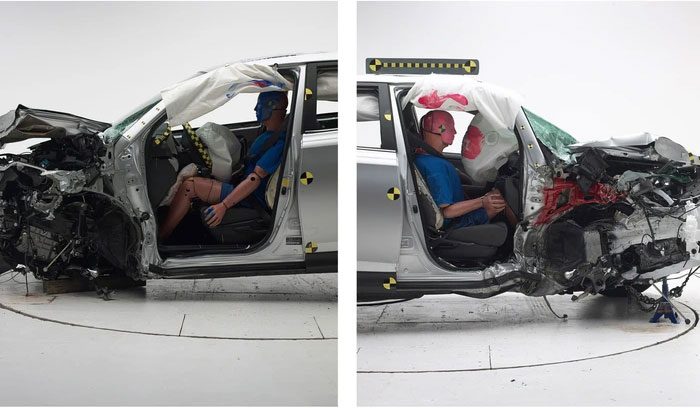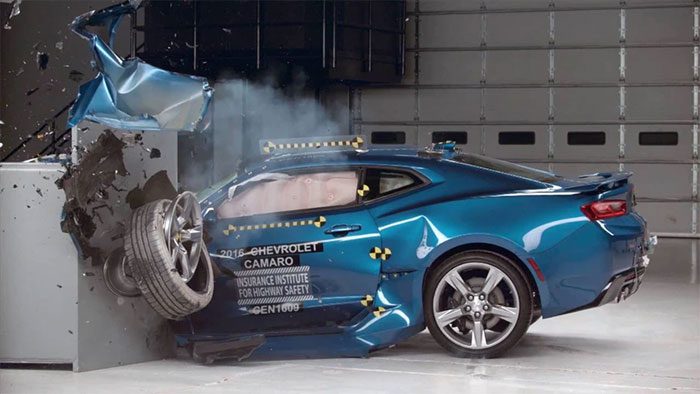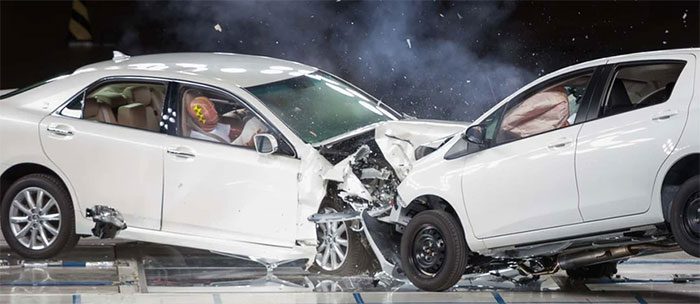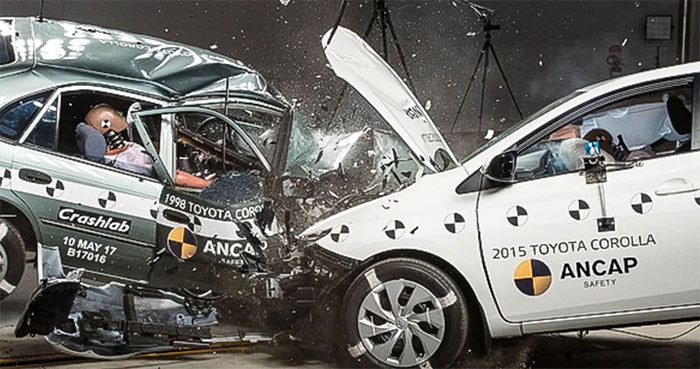When talking about high-speed collisions, people often envision horrifying scenarios: loss of vehicle control, deafening impacts, rapid deformation of the vehicle body, and even the possibility of explosions. So what happens when speeds reach an astonishing 200 km/h?

A test of the safety features and durability of cars.
The Dangers of a 200 km/h Collision: How High-Speed Impacts Affect the Human Body
In reality, this is just a test of the safety features and durability of vehicles. At a speed of 200 km/h, the car travels approximately 56 meters per second, and upon collision, the force exerted on the vehicle and its passengers drastically increases. According to Newton’s laws of motion, as speed increases, the force of impact increases significantly.
In high-speed collisions, the force quickly transmits to critical body parts such as the head, chest, and abdomen, which can lead to severe injuries like head trauma, broken bones, and internal organ rupture. The sudden acceleration and deceleration during a collision can have a tremendous impact on the body, easily resulting in various injuries such as concussions, spinal injuries, or muscle strains.

High-speed collisions pose a significant threat to human life. When a collision occurs at high speed, the lives of passengers are severely endangered due to the overwhelming force of impact.
During a collision, the vehicle will deform and be destroyed rapidly, and safety devices may not fully protect passengers. There is a risk that people inside the vehicle could become trapped due to the force of the collision, making rescue operations extremely difficult and potentially leading to fatal disasters.
High-speed collisions can also profoundly affect a person’s psychology. Survivors of car accidents may experience psychological issues such as PTSD (Post-Traumatic Stress Disorder). The panic and extreme despair during the collision can linger afterward, affecting the mental health of survivors. They may feel fear, anger, anxiety, and depression, filled with dread and distrust of the future. This psychological burden can severely impact recovery and rehabilitation processes.
The Impact of a 200 km/h Collision: The Extent of Damage After a Car Accident
The structure and materials of a vehicle endure enormous pressure under high-speed impact forces. Typically, the front and rear sections of a vehicle are the most vulnerable to damage.
When a car strikes a solid object at 200 km/h, the force concentrates on the front of the vehicle. Consequently, the front structure, including the body shell, engine, and other critical mechanical components, is at high risk of severe damage.

Passengers in the vehicle also face significant risks. When a vehicle collides at such high speeds, those inside must endure substantial inertia forces.
Even if the car is equipped with protective devices like airbags and seatbelts, passengers cannot completely escape the risk of injury. The force of impact can cause injuries to those inside, particularly to the head, neck, and chest.
When the vehicle collides violently with other objects, the internal fuel system can be damaged, leading to fuel leaks that may result in a fire, causing additional damage and fatalities.
Vehicle components can also suffer severe damage after a collision. For instance, the chassis and suspension system are prone to damage, rendering the vehicle undrivable. High-speed impacts can also cause tires to burst or detach, further increasing the risk of losing control of the vehicle.

In high-speed collision scenarios, a more stable body structure should be considered to ensure passenger safety.
The Truth About 200 km/h Collisions: What Do Crash Tests Reveal?
The Importance of Crash Testing: Crash testing is one of the critical metrics for assessing the safe operational capability of automobiles, aimed at protecting passenger lives. Such tests can comprehensively evaluate a vehicle’s crash performance by simulating real-life collision scenarios, serving as a foundation to ensure passenger safety.
Revealed Facts: Results from crash tests at 200 km/h show that the body structure of many vehicles suffers severe damage, putting passenger lives at tremendous risk. For example, after testing, it was found that doors of numerous vehicles had fallen off, the body had visibly deformed, and occupants faced a significant risk of serious injury.
The deformation of the vehicle body structure during crash testing indicates that the body structure seems vulnerable during high-speed collisions. Therefore, in the future, automobile manufacturers should enhance design and optimize the structural durability of vehicle bodies to improve crash resilience.
In crash tests, many vehicles lack sufficient survival space, meaning that after a collision, the living space for occupants is severely restricted. This raises issues such as the need to improve cabin drainage capabilities and increase passenger exit routes for vehicle manufacturers.


















































